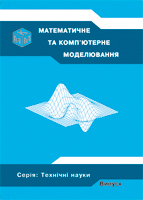Метод моделі виявлення ризику при фільтрації пакетів
DOI:
https://doi.org/10.32626/2308-5916.2021-22.58-66Анотація
У цій статті описані діаграми мережі Петрі для нечітких знань і міркувань. Сформована математична модель нечітких мереж Петрі для виявлення ризиків в правилах за допомогою фільтрації пакетів. Представлена модель дворівневої системи нечіткої фільтрації пакетів, що забезпечує ефективність фільтрації пакетів. Ця модель використовує нечітку мережу Петрі в якості графічного методу для опису нечіткого логічного управління рухом пакетів через міжмережевий екран і дозволяє їй визначати рівень загрози, вбудованої в пакети з Інтернету, і змінювати порядок списків ACL шляхом визначення рейтингу. прийому і відхилення пакетів. У запропонованій моделі пакет представлений токеном замість нечітких мереж Петрі, а робота пакету ілюструється переходом нечіткої мережі Петрі, яка відповідає за переміщення пакета з одного місця в інше
Посилання
Thong W. J., Ameedeen M. A. A Survey of Petri Net Tools Advanced Computer and Communication Engineering Technology. Lecture Notes in Electrical Engineering / ed H. Sulaiman, M. Othman, M. Othman, Y. Rahim, N. Pee. 2015. Vol. 315. P. 537-551.
Zaitsev D. A. Toward the Minimal Universal Petri Net. IEEE Transactions on Systems, Man, and Cybernetics: System. 2013. P. 47-58.
Gulomov Sh., Ganiev A., Vaade V. Formalization of the business process security. International conference on information science and communications technologies applications, trends and opportunities (ICISCT). 4-6 November, 2019, Tashkent Uzbekistan.
Mirzaeva M. B., Suleymanov A. A. Communication network reliability evaluation using the simulation approach. Technical Science and Innovation. Tashkent State Technical University named after Islam Karimov. 2020. № 4 (06).
Karimov M. M., Gulomov Sh. R. IP-Traffic classification model based on machine learning ways. Chemical Technology, Control and Management. 2020. Vol. 2020. Is. 5 Special issue 5-6. P. 123-128.
Yusupov S. Y., Gulomov Sh. R. Improvement the schemes and models of detecting network traffic anomalies on computer systems. 2020 IEEE 14th International Conference on Application of Information and Communication Technologies (AICT). Tashkent, Uzbekistan, 2020. P. 1-5.
Gulomov Sh. R., Yusupov S. Y. Improvement the schemes and models of detecting network traffic anomalies on computer systems. 2020 IEEE 14th International Conference on Application of Information and Communication Technologies (AICT). Tashkent, Uzbekistan, 2020. P. 1-5.
Kodirov Z. Z., Karimov M. M., Tashev K. A., Gulomov Sh. R., Islomova M. X. Q. Artificial Intelligence, Ensuring Information Security in Virtual Robots And Extensive Use Of Smart Systems. The American Journal of Engineering and Technology. 2020 Vol. 02. Is. 08-04. P. 28-38.
Voronkov L. H., Iwaya L. A., Martucci S. Lindskog. Systematic Literature Review on Usability of Firewall Configuration. ACM Computing Survey. 2018. Vol. 50. № 6.
Gulomov Sh. R., Yusupov B. K., Kamilov Sh. Sh. ugli. Models and algorithms for solving problems associated with large amounts of data in the military sphere. International Conference on Information Science and Communications Technologies, ICISCT 2020. Tashkent; Uzbekistan.
Chao S., Yang S. J.-H. Towards a Usable Anomaly Diagnosis System among Internet Firewalls’ Rules. Journal of Internet Technology. 2019. Vol. 20. № 3. P. 789-799.
##submission.downloads##
Опубліковано
Номер
Розділ
Ліцензія
Authors who publish with this journal agree to the following terms:- Authors retain copyright and grant the journal right of first publication with the work simultaneously licensed under a Creative Commons Attribution License that allows others to share the work with an acknowledgement of the work's authorship and initial publication in this journal.
- Authors are able to enter into separate, additional contractual arrangements for the non-exclusive distribution of the journal's published version of the work (e.g., post it to an institutional repository or publish it in a book), with an acknowledgement of its initial publication in this journal.
- Authors are permitted and encouraged to post their work online (e.g., in institutional repositories or on their website) prior to and during the submission process, as it can lead to productive exchanges, as well as earlier and greater citation of published work (See The Effect of Open Access).

